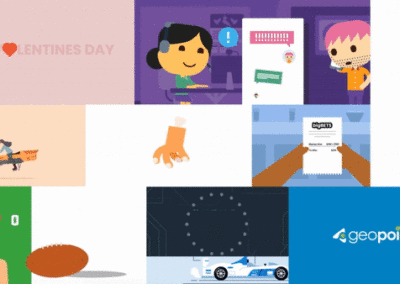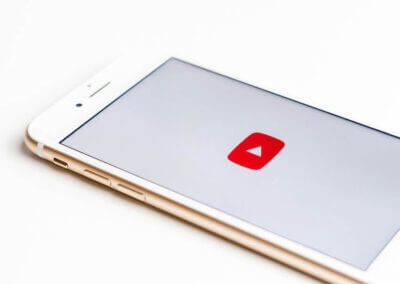Video is taking over the Internet. Every minute, 300 hours of video content is uploaded to YouTube, which has over 1 billion users ready to consume that content. This means one of two things: 1. Businesses have a great medium for sharing engaging content with potential buyers, or 2. We’re all going to become brainwashed zombies.
For the sake of time, we’re just going to cover #1, considering that 70% of marketing professionals believe that video converts better than any other medium—and that’s a huge opportunity.
The reasoning behind this is simple: Video keeps the attention of your website visitors. In fact, the average Internet user spends 88% more time on websites with videos because of how engaging they can be. Of course, most videos on the Internet either have pandas sneezing or Charlie biting someone’s finger—but these probably won’t do your business any good.
Rather, when used to provide potential buyers information strategically, and when aligned with the different stages of the Buyer’s Journey, videos can attract more visitors, convert more visitors to leads, and close more leads into customers. Consider using this information to build a buyer-centric, inbound video marketing strategy for your company, plotting what videos you can use at each stage of the Buyer’s Journey.
Awareness Stage (Top of the Funnel)
When a buyer is in the Awareness Stage, they tend to be vaguely aware that they have a problem (perhaps a problem you have the solution to), though they haven’t quite diagnosed it yet and aren’t ready for a sales pitch. At this stage, buyers are looking for information and educational content to explain their problem. Here are a few types of videos that could fall into the Awareness Stage of your video roadmap:
- Educational videos
- How-to videos
- FAQ videos
Again, buyers are not looking for a sales pitch in this stage—they’re looking for information about their problem. The point of Top of the Funnel videos is to attract visitors to your site and into your funnel by making them see their problem in a different light.
By educating visitors, they will begin to see you as an industry expert, someone they can trust who may just have the solution they’re now looking for. If your videos do what they’re supposed to do, the information you provide will nurture your lead into the next stage of the Buyer’s Journey, and into the Middle of your Funnel.
Consideration Stage (Middle of the Funnel)
In the Consideration Stage, buyers now understand that they have a problem and a need for a solution. This is where they search out all the possible solutions available—solutions like yours. At this point in the Buyer’s Journey, buyers are ready to see how your products or services can help them. A couple appropriate types of videos for this stage include:
- Explainer videos
- Product or service orientation videos
Both of these video types offer information on how you can help your potential buyer. Be sure not to focus on the features of your products or services, but rather on the benefits and solutions the customer will receive. Additionally, this is a great point in time to get some of your employees involved in your videos, to cultivate digital relationships with your leads that will continue to build their trust.
Decision Stage (Bottom of the Funnel)
And at last, your potential buyer arrives at the Decision Stage, where they choose between your solution and the solutions of your competitors. If your Consideration Stage videos did the trick, you’ll have impressed them enough to keep you in mind for their decision. This is when your videos can help your Sales team close the deal, especially these types of videos:
- Customer testimonial videos
- Case study videos
- Competitive comparison videos
At the Bottom of the Funnel, videos can enable your Sales team to convince leads and justify their purchase with this additional information.
Additionally, after your Sales team closes your lead into a full-fledged customer, videos can continue to be used to delight these customers. Videos featuring best practices, tips and tricks, additional features, or perhaps coverage of your company events will keep your customers in the loop, and keep you at the back of their minds.
By the time you finished reading this, hundreds of hours of video were uploaded to YouTube. You might want to upload some of your own (buyer-centric) videos before we all get brainwashed by sneezing pandas.
Want to learn more about inbound video marketing? Check out our free guide below!



